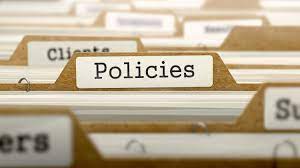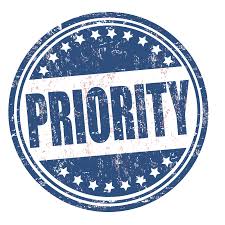Get a Custom Essay Paper that meets your expectations by clicking ORDER
Nature and substance of 4 selected distinct policies
ORDER INSTRUCTIONS:
In a research paper, provide researched rationale for the nature and substance of your 4 selected, distinct policies. This paper is to be reflective of an academic research paper. The research paper must address the reasoning and/or rationale for the inclusion of the selected policy elements in a policy manual.
The selected policies must correctly address employment legislation pertinent to the stated size of the company (15–25 employees). In elaborating on the rationale, you may want to consider the following questions: Why should these elements be in a policy manual? What laws or principles mandate an organization follow these guidelines? What cases have established precedent for this issue to be addressed clearly in an organization’s employee policy manual?
Support your rationale with (at minimum) the 10 scholarly sources used in your annotated bibliography in addition to the textbook and the Bible. Remember, government websites and previous/current court cases are useful but will not be included in the scholarly reference requirement.
The paper must be at least 1,750 words, in addition to the cover page, the abstract, and the references page. It must be written in current APA format. Papers submitted with less than the minimum word count will not receive full credit in this area of the grading rubric.
Following are some examples of HR policy topics. These are only examples. You may identify/select other topics that would be relevant and appropriate for a general employee policy manual/handbook.
- Dress Code
- Technology Use
- Code of Conduct
- Confidentiality
- Harassment
- Benefits (This can be more specific to areas such as paid time off, health care benefits, and so forth.)
- Training Opportunities/Expectations
Below is a partial answer to the above homework questions by one of our writers. If you are interested in a custom non plagiarized top quality answer, click order now to place your order.
Nature and substance of 4 selected distinct policies
Topic 1 – Dress code policies
Most organizations operate in a formal environment and have a given image they need to maintain. Therefore, the company requires a set of rules that act as guidelines for the mode of dressing for the members of staff. The application of such guidelines and their inclusion into the policy manual of the organization. While such policies apply to all employees in the organization, they are of utmost importance to the front line workers who interact with the customers and are a major representation of the image of the firm.
Rationale and reasoning behind the inclusion of dress code policies in the policy manual
Organizations implement dress code policies in their policy manuals for a number of varying reasons. Key among these is the need for uniformity at the firm (Karl, Peluchette, & Hall, 2016), the decision to portray a given image, and the need for efficiency within the firm (Raj, Khattar, & Nagpal, 2017). Research shows that there is a positive correlation between the mode of dressing and the performance at the workplace (Karl, Hall, & Peluchette, 2013; Raj, Khattar, & Nagpal, 2017). This is a major reason behind the implementation of dress code policies, where a dress code that is both formal and includes an allowance for a casual approach. Such a policy mainly addresses areas of work where comfort is crucial and improves the efficiency of work done.
Laws and principles that mandate the organization to follow the dress code principle
Various statutory requirements provide additional guidelines for the dress code at the workplace. A number of legal constraints may prevent the installation of certain rules in various jurisdictions. For example, the clear distinction between the dresses and roles for male and female employees may cause a problem within some jurisdictions. In areas where laws protecting the rights of the LGBT community are in place, the organization might have to reduce its stance on such differences (Yılmaz & Göçmen, 2016; Jones, 2013).
Matters of culture, race, and religion also play a role in the development of such policies within the workplace, such as the example of Muslim women rights and freedoms at work (Harrison, 2016). In such scenarios, the organization has the mandate to alter and precisely follow all guidelines that address the dress code in the workplace.
Cases that established precedence for the clear addressing of the issue in the policy manual
Various decisions by the courts have set precedence over some issues regarding dressing at the workplace. For instance, some courts have repelled the need for workers at casinos and various department stores to wear company insignias and other additional paraphernalia.
The courts in the ninth and sixth circuits banned various insignia on the uniforms assigned to workers based on four new rules as per Mitchell, Koen, and Darden (2014). In addition, Carroll v Talman Federal Savings and Loan Association of Chicago, and Lanigan v Bartlett and Co. Grain set precedence for issues of neutrality in dress code as regards to religion and gender (Mitchell, Koen, & Darden, 2014).
Topic 2 – Code of conduct policies
The moral and ethical concerns of a given organization should be contained within the guiding framework of the code of conduct policy of the firm. These provide the rules and recommendations about the moral conduct of the staff, as well as the ethical guidelines limiting certain forms of activity within the firm. Different firms, depending on their industry and fields of operation make use of different models in the creation of their code of conduct policies within their policy manual.
Rationale and reasoning behind the inclusion of code of conduct policy in the policy manual
The manner in which the employees of an organization conduct themselves is a pointer to the ethical and moral standpoint of the firm. Therefore, an organization should have a set of code of conduct policies within their policy manual. These policies act as guidelines for the employees on how the organization expects them to conduct themselves since they are the main representatives of the firm.
Customers and other members of the public view the actions of the individual members of staff as part of the firm. In this light, various lawsuits against individuals have resulted to pulling the company in as part to the accusations. The inclusion of the code of conduct policy, however, is not only for the purposes of avoiding embarrassing scenarios and mitigating against litigation, but also for training, and improvement of performance within the organization (Manroop, Singh, & Ezzedeen, 2014).
Laws and principles that mandate the organization to follow the code of conduct principles
In order to curb the growing nuisance of managerial misconduct influenced by the lack of ethical standards, the implementation of the Sarbanes Oxley laws came into play at the beginning of the 21st century. The Sarbanes Oxley Act is among the main laws in the 21st century requiring a company to have in place ethical guidelines and code of conduct policies within their policy manuals. Organizations that intend to trade their shares either in the New York Stock Exchange or in the NASDAQ should have in place a set of business conduct and ethical guidelines as a basic requirement (Smith & Colvin, 2016).
Cases that established precedence for the clear addressing of the issue in the policy manual
In the case of Alistair Alford and Culture and Sport Glasgow, there was a ruling where the courts had to decide which was greater between privacy and accountability. In such a case, there were two elements within the policy manual for a firm that collided, and the courts needed to decide which would supersede the other. An appeal of the initial ruling made a case where upholding the code of conduct was paramount in the handling of the matter at hand. The courts found that issues of transparency held higher ethical standing than the protection of the individual’s data (Ferguson, Thornley, & Gibb, 2016)….
Get a Custom Essay Paper that meets your expectations by clicking ORDER







